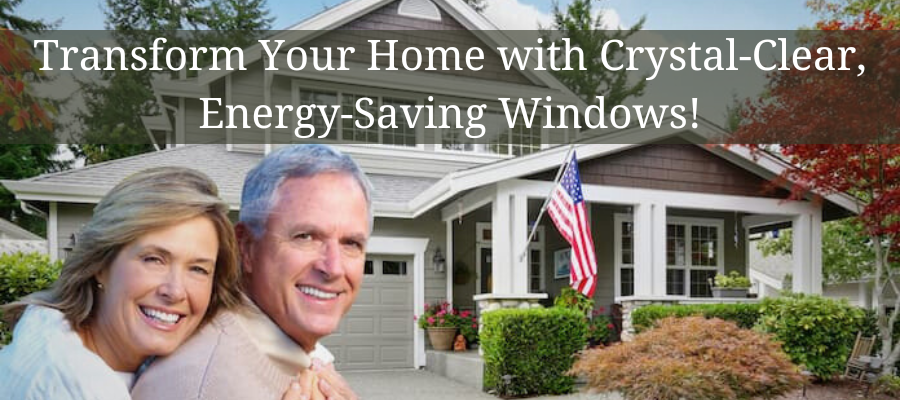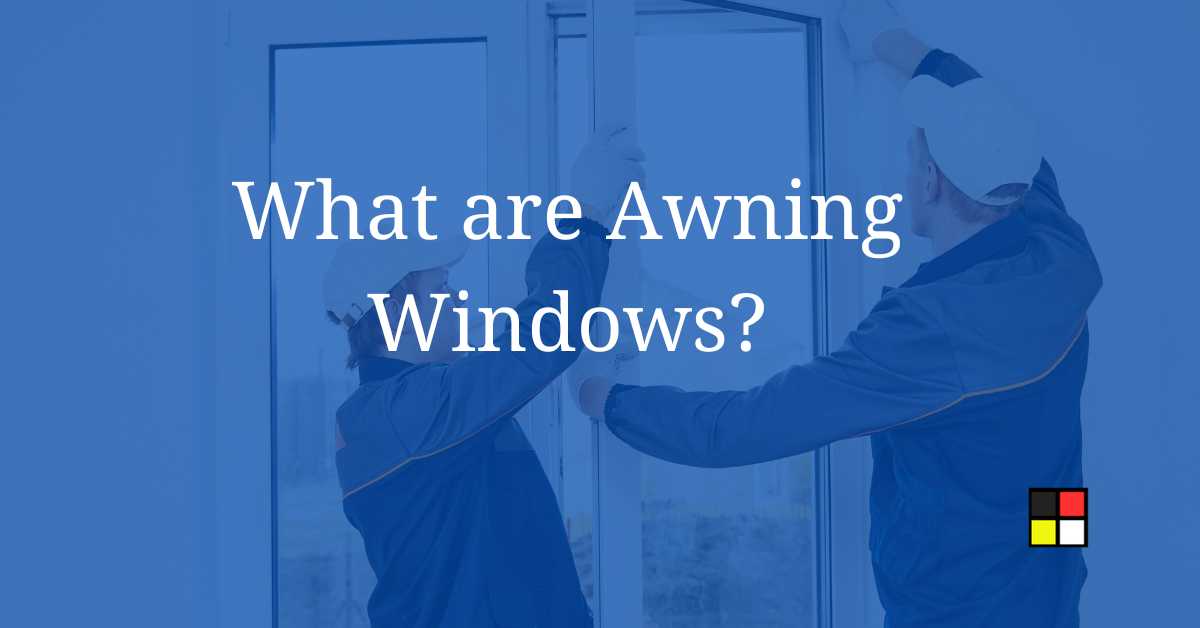Awning windows are a popular choice among homeowners looking to enhance ventilation and protect their interiors from the elements.
Characterized by their top-hinged design, awning windows swing outward from the bottom. This creates an awning-like effect that allows fresh air to enter while keeping out rain.
This unique opening mechanism provides continuous ventilation, regardless of the weather. That makes them an ideal option for rooms requiring consistent airflow, such as kitchens and bathrooms.

Unlike traditional sliding or double-hung windows, awning windows offer a blend of functionality and aesthetic appeal.
They are particularly well-suited for hard-to-reach areas because they can be operated with ease using a handle or crank.
In terms of cost, awning windows can be more expensive than standard windows due to their specialized hardware and sealing technology. However, the investment can be offset by their energy efficiency and the added value they bring to your home through increased natural light and enhanced curb appeal.
Key Takeaways
- Awning windows allow for ventilation even during light rain.
- They can be more costly but offer unique benefits in airflow and design.
- Best suited for hard-to-reach places and energy-efficient home designs.
Understanding Awning Windows

Awning windows are a popular choice when you crave both ventilation and protection from the elements. They are hinged at the top and open outward from the bottom, providing a unique shield-like function that allows you to let fresh air in even when it’s raining.
Key Benefits:
- Ventilation: Offer excellent airflow, making them a great option for stuffy rooms.
- Weather Protection: Their outward-opening design prevents rain from entering your space.
- Versatility: Can be installed higher on walls for privacy while still letting in sunlight.
Comparing Awning to Other Styles:
| Style | Opening Mechanism | Ventilation | Weather Protection |
|---|---|---|---|
| Awning | Hinged at the top | Superior | Excellent |
| Slider | Slide horizontally | Moderate | Good |
| Double-Hung | Slide vertically | High | Moderate |
When it comes to cost, awning windows can be more expensive than standard slider or double-hung windows due to their specialized mechanism and superior weather-proofing abilities. However, prices vary widely based on material, size, and manufacturer, so you’ll find a range that suits your budget.
Remember, they’re also different from traditional casement windows that are hinged on the side. Their upward opening can make them more challenging to clean from the outside, but their benefits may outweigh this minor inconvenience, depending on your needs.
Key Benefits of Awning Windows

When you’re considering new windows, awning windows can offer several advantages tailored to your needs, from better airflow to energy savings.
Enhanced Ventilation
Awning windows are hinged at the top, allowing you to open them from the bottom. This creates a unique opportunity for ventilation.
This design can help you achieve a continuous breeze and improved air circulation even during light rain. Their ability to remain open under wet conditions is a prime feature that sets them apart from other window styles.
Improved Energy Efficiency
Due to their airtight seal when closed, awning windows can contribute to reducing your home’s energy consumption.
When properly installed, they can minimize air leakage more effectively than sliding windows, potentially lowering your heating and cooling costs.
The same mechanics that improve their energy efficiency also provide excellent insulation against outdoor noise.
Versatile Design Options
Awning windows offer flexible design options that can complement a variety of architectural styles.
They can be installed higher on walls than many other window types, providing natural light and ventilation without compromising privacy. The window’s straightforward design also makes it suitable for both traditional and modern homes, aligning with a range of aesthetic preferences.
Comparison With Other Window Styles

When considering awning windows, it’s important to understand how they stand out from other window styles in terms of functionality, design, and cost.
Awning vs Casement Windows
Awning windows hinge at the top and open outward from the bottom, using a crank. They’re great for ventilation even during light rain.
On the other hand, casement windows also use a crank but hinge at the sides. Casement windows often provide more expansive views and can catch side breezes, but they cannot remain open during rainy conditions.
Awning vs Sliding Windows
Sliding windows glide horizontally, saving space since they don’t open outward.
They allow for easy operation and are typically lower in cost compared to awning windows. However, awning windows can be left open for airflow without letting in rain, a unique advantage over sliding windows.
Awning vs Fixed Windows
Fixed windows do not open and are purely for aesthetic appeal and natural light. They can be more energy-efficient due to the lack of openings.
Awning windows, while operable, can still offer excellent energy efficiency with proper glazing. They also allow for ventilation, which is something fixed windows cannot provide.
Cost Analysis of Awning Windows

When considering awning windows for your home, understanding the costs involved is crucial. From materials to installation nuances, various factors can influence the price you’ll pay.
Factors Affecting Awning Window Prices
- Materials: The type of material used for the frame—such as vinyl, wood, or aluminum—can significantly affect the cost. For example, wooden frames are typically more expensive due to their aesthetics and insulation properties.
- Size and Design: Custom sizes or designs with unique hardware or finishes will increase the price.
- Energy Efficiency: Windows with energy-efficient features, such as low-E coatings or argon gas fill, may command higher prices but could reduce energy costs in the long run.
- Installation Complexity: Labor costs vary depending on whether the awning windows are part of new construction or a replacement in existing walls, with the latter possibly requiring additional work and expense.
Cost Comparison with Other Window Types
- Double-Hung Windows: Awning windows are often more affordable than double-hung windows because they have fewer moving parts and are easier to manufacture.
- Casement Windows: The cost of awning and casement windows is generally comparable, but casement windows might be slightly more costly due to their larger size and more complex hardware.
- Fixed Windows: Fixed or picture windows are usually less expensive than awning windows since they don’t open and lack operational mechanisms.
Note: While awning windows can be more economical than some other styles, always consider the long-term benefits of energy savings and the potential for increased property value when assessing the cost.
Installation Considerations for Awning Windows

Before you decide on awning windows for your home, it’s important to understand where they fit best and whether you should hire professionals or try installing them yourself.
Suitable Locations for Installation
Awning windows hinge at the top and open outward from the bottom, which allows them to be placed higher on walls than many other window types.
They’re ideal for areas where you want privacy or where wall space is limited, such as bathrooms or kitchens. Consider placing them above sinks or counters where you can’t reach easily to open a sliding or double-hung window.
- Ventilation: Awning windows are excellent for ventilation, even during light rain, as the glass pane protects the interior from water.
- Natural Light: Their placement high on walls allows for ample natural light without compromising privacy.
Professional Installation vs DIY
When it comes to installing awning windows, you might be tempted to do it yourself. However, consider the following:
- Precision is Key: Windows need to be installed level, plumb, and square. Mistakes can lead to issues like improper operation or water leaks.
- Tools and Materials: Professional installations ensure that the correct tools and materials are used, which might not be readily available to the average DIYer.
- Warranty: Many manufacturers require professional installation as a condition of the warranty. Doing it yourself could void this valuable protection.
Frequently Asked Questions

Awning windows, with their top-hinged design, offer distinct advantages for ventilation and aesthetics. Here’s what you need to know about their benefits, differences from other windows, and cost considerations.
What are the advantages of installing awning windows in a home?
Installing awning windows in your home means enjoying improved ventilation. You can leave them open during a light rain without water seeping in. They are also great for enhancing privacy while letting in light.
How do awning windows stand out from casement windows in design and functionality?
Unlike casement windows, which are side-hinged and open outward to the left or right, awning windows are hinged at the top. This allows them to open out and up, providing unique protection and allowing ventilation without compromising on security.
In what ways are awning windows considered more energy-efficient compared to other window styles?
Due to their design, awning windows seal tighter when closed. This contributes to better insulation against air leakage. And, this can help you save on heating and cooling costs by keeping your home’s temperature stable.
What makes awning windows a unique choice compared to traditional sliding windows?
The uniqueness of awning windows comes from their ability to provide ventilation even in wet weather and their top hinge design. This makes them an ideal choice, especially for tight spaces or areas where a sliding window’s range of motion could be obstructed.
What are the potential drawbacks or limitations of choosing awning windows for a property?
While awning windows have many upsides, they can be challenging when placed in high-traffic areas outside since they open outward. They also typically require more maintenance due to their intricate mechanisms.
How does the cost of awning windows compare to other types of windows on the market?
Generally, awning windows can be more expensive than standard sliding or double-hung windows. This is due to their construction and operating mechanism. However, energy savings over time can offset the initial investment.






